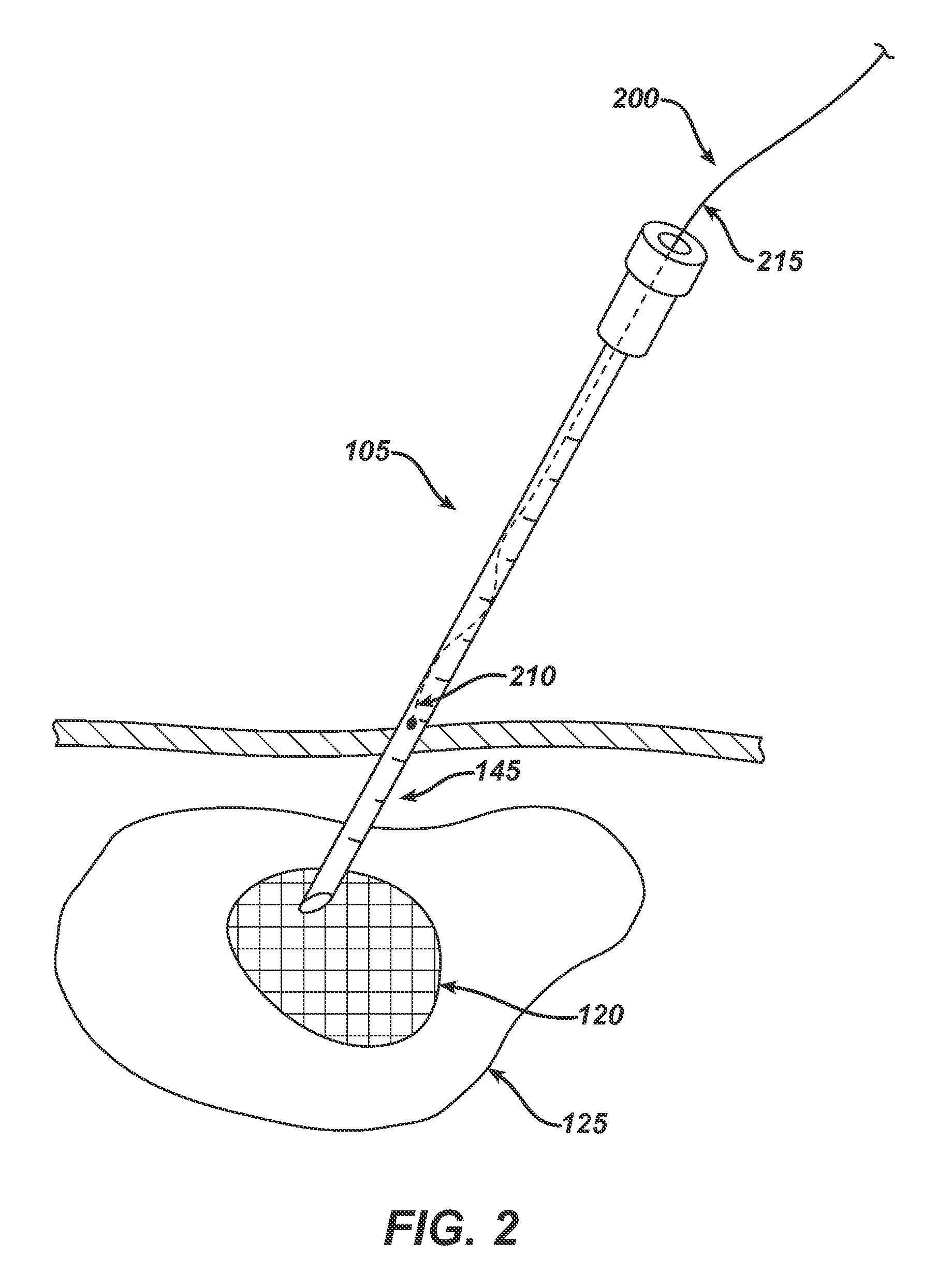System and Method for Targeted Delivery of Therapeutic Agents to Tissue
- Summary
- Abstract
- Description
- Claims
- Application Information
AI Technical Summary
Benefits of technology
Problems solved by technology
Method used
Image
Examples
example
[0075]A patient suspected of having a metabolic disorder is directed by their doctor to have a ultrasound or CT imaging of their abdomen. For example, a suitable CT scan is obtained by using a 16-detector scanner (Siemens Sensation; Siemens Medical Systems, Erlangen, Germany) and the following technical parameters: 16-section helical acquisition mode, 0.75-mm detector aperture, 0.5-second rotation time, table speed of 3.6 cm / sec, beam pitch of 1.5, 120 kVp, and 130 mAs. A 2 cm suspicious mass is identified within the pancreas. The tumor is considered non-resectable by the surgeon and neoadjuvant therapy comprised of chemotherapy and RF ablation is determined to be the best course of treatment for the patient in that it may shrink the tumor and ablate the remnants, thus avoiding surgery. Rather than expose the patient to systemic chemotherapy, the surgeon chooses to use the system of the present invention.
[0076]With the use of the CT scan for guidance, the surgeon plans the access ro...
PUM
| Property | Measurement | Unit |
|---|---|---|
| Temperature | aaaaa | aaaaa |
| Temperature | aaaaa | aaaaa |
| Temperature | aaaaa | aaaaa |
Abstract
Description
Claims
Application Information
 Login to View More
Login to View More - R&D
- Intellectual Property
- Life Sciences
- Materials
- Tech Scout
- Unparalleled Data Quality
- Higher Quality Content
- 60% Fewer Hallucinations
Browse by: Latest US Patents, China's latest patents, Technical Efficacy Thesaurus, Application Domain, Technology Topic, Popular Technical Reports.
© 2025 PatSnap. All rights reserved.Legal|Privacy policy|Modern Slavery Act Transparency Statement|Sitemap|About US| Contact US: help@patsnap.com



